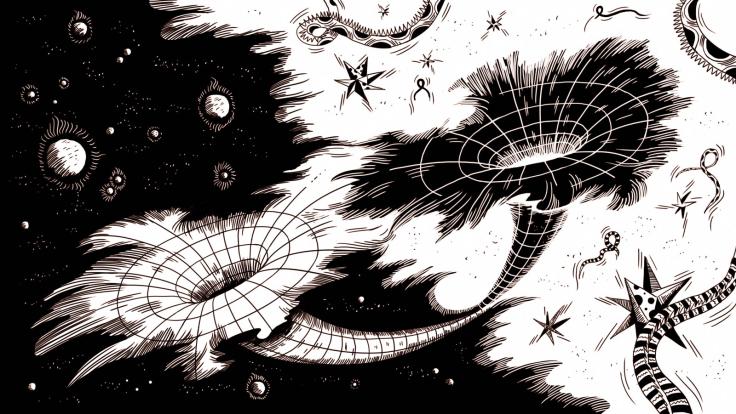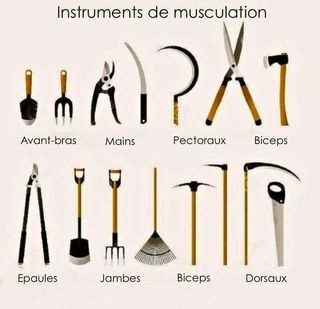laurelrusswurm laurelrusswurm@identi.ca
the interwebz
I'm a self publishing author, free culture advocate, media artist and a mom. ⇐ Author page: http://laurel.russwurm.org/blogs/ • Libreleft Books http://libreleft.com ⇓—————————————————————————————————————————————————————————————————————————————— ⇒ just now my GNUsocial Instance is under construction (http://s.russwurm.org/laurelrusswurm) | email: laurel.l@russwurm.org ⇑

Elena ``of Valhalla'' at 2016-01-13T17:11:36Z
Speaking of solar-powered computing, instead: I do it relatively often; I have a portable panel about 60x60 cm (folded in half for carrying) and a 7Ah battery, both with handles (wouldn't do for a hike, but as long as you're not walking that much it's fine).
Any random laptop can probably be used for a decent amount of time, as long as the battery is already charged in advance, but the devices I usually use are:
* OpenPandora: a gaming handheld with a decent keyboard, GNU/Linux OS and a great community. It is small, but surprisingly efficient. I don't think they sell it anymore, but they are working on a successor and it's still supported by the producer. It has a *huge* battery for its size and only needs recharging from the solar panel when using wifi to get on the internet.
* Efika MX Smartbook: an ARM based netbook which came with Ubuntu from the producer: extremely light and with long battery times, Debian worked just fine on it. No longer produced, no longer supported and no longer upgradeable since there is no support in mainline kernel. Still works, sort-of, but you can't really trust it on the internet. It also was never really able to play videos under Debian because of the lack of proprietary codecs.
Nowadays I'm looking at the Arm64-based laptop that Olimex is working on: right now there is no mainline support, but AFAIK the sunxi community may be working on it. They are an established company, so they won't need crowdfunding, but there are still no infos on pricing etc.
laurelrusswurm, Claes Wallin (韋嘉誠) likes this.

Elena ``of Valhalla'' at 2016-01-13T16:43:52Z
I'm sorry that you've lost money, I hope that the fact that the company is canadian will mean that you will be able to get (some of?) your money back.
I'd think that nowadays if you want to build a niche product and need financing from early buyers you should be doing it through something that evidentely looks like a crowdfunding platform: the risk for the customer is just as high (or higher, since there are usually no refunds), but at least you're being open up front on what is the actual product status.
laurelrusswurm, Claes Wallin (韋嘉誠) likes this.


Charles Stanhope at 2016-01-13T01:24:53Z
I'm sorry you had so much trouble. That sounds tremendously aggravating to deal with.laurelrusswurm likes this.

JanKusanagi at 2016-01-13T12:16:27Z
Sad to hear it, especially because the solar laptop you describe sounds really cool.
laurelrusswurm likes this.

lnxwalt@microca.st at 2016-01-13T02:03:49Z
> Possibly the worst thing is that even though the company wasn't shipping laptops, it kept updating the website, and now supposedly the next generation Sol is available.
Yes, that's common even when it was not (originally) a scam. "We just need a few more paid customers, and we can really make and ship the product."
Sorry to hear that this happened.laurelrusswurm likes this.

Christine Lemmer-Webber at 2016-01-12T18:15:08Z
I sure hope so!
Elena ``of Valhalla'', X11R5, lnxwalt@microca.st, laurelrusswurm and 9 others likes this.
Claes Wallin (韋嘉誠), Claes Wallin (韋嘉誠) shared this.
 "... called a computer-aided design (CAD) file, that instructs the printer to make a physical, three-dimensional object." Boom. Credibility zapped already in second paragraph. Skimmed the rest in five seconds. "What if a dentist ... brilliant braces ... filesharing ... 3D print ... impossible to trace down infringers". Yep, that's what I'm hoping too.
"... called a computer-aided design (CAD) file, that instructs the printer to make a physical, three-dimensional object." Boom. Credibility zapped already in second paragraph. Skimmed the rest in five seconds. "What if a dentist ... brilliant braces ... filesharing ... 3D print ... impossible to trace down infringers". Yep, that's what I'm hoping too.Claes Wallin (韋嘉誠) at 2016-01-12T18:27:16Z
Christine Lemmer-Webber, Stephen Sekula likes this.

sazius at 2016-01-12T20:18:09Z
Yeah, the W3C Social WG effort is promising, it has folks from pump.io, MediaGoblin, Diaspora and now also OwnCloud, and people from Friendica are getting involved. The idea is to have a common standard.
laurelrusswurm, Scott Sweeny likes this.

Sumana Harihareswara [on Mastodon] at 2016-01-12T21:48:40Z
Employers & landlords of New York City: http://www.nyc.gov/html/cchr/downloads/pdf/publications/GenderID_InterpretiveGuide_2015.pdf says: update your systems, ask for gender pronouns https://github.com/anne-decusatis/genderamenderlaurelrusswurm likes this.


We miss you, Aaron Swartz. Thank you for everything you did to build free software and a free society.
Free Software Foundation at 2016-01-11T20:33:56Z
gnubrunswick, sazius, laurelrusswurm, Morgan McMillian and 2 others likes this.
Sonata Green, Sonata Green, Adonay Felipe Nogueira, laurelrusswurm and 4 others shared this.

Black holes
ParticleNews at 2016-01-12T17:27:39Z
Shared from RSS:
"Black holes"
Let yourself be pulled into the weird world of black holes.

Imagine, somewhere in the galaxy, the corpse of a star so dense that it punctures the fabric of space and time. So dense that it devours any surrounding matter that gets too close, pulling it into a riptide of gravity that nothing, not even light, can escape.
And once matter crosses over the point of no return, the event horizon, it spirals helplessly toward an almost infinitely small point, a point where spacetime is so curved that all our theories break down: the singularity. No one gets out alive.
Black holes sound too strange to be real. But they are actually pretty common in space. There are dozens known and probably millions more in the Milky Way and a billion times that lurking outside. Scientists also believe there could be a supermassive black hole at the center of nearly every galaxy, including our own. The makings and dynamics of these monstrous warpings of spacetime have been confounding scientists for centuries.
Artwork by Sandbox Studio, Chicago with Ana KovaA history of black holes
It all started in England in 1665, when an apple broke from the branch of a tree and fell to the ground. Watching from his garden at Woolsthorpe Manor, Isaac Newton began thinking about the apple’s descent: a line of thought that, two decades later, ended with his conclusion that there must be some sort of universal force governing the motion of apples and cannonballs and even planetary bodies. He called it gravity.
Newton realized that any object with mass would have a gravitational pull. He found that as mass increases, gravity increases. To escape an object’s gravity, you would need to reach its escape velocity. To escape the gravity of Earth, you would need to travel at a rate of roughly 11 kilometers per second.
It was Newton’s discovery of the laws of gravity and motion that, 100 years later, led Reverend John Michell, a British polymath, to the conclusion that if there were a star much more massive or much more compressed than the sun, its escape velocity could surpass even the speed of light. He called these objects “dark stars.” Twelve years later, French scientist and mathematician Pierre Simon de Laplace arrived at the same conclusion and offered mathematical proof for the existence of what we now know as black holes.
In 1915, Albert Einstein set forth the revolutionary theory of general relativity, which regarded space and time as a curved four-dimensional object. Rather than viewing gravity as a force, Einstein saw it as a warping of space and time itself. A massive object, such as the sun, would create a dent in spacetime, a gravitational well, causing any surrounding objects, such as the planets in our solar system, to follow a curved path around it.
A month after Einstein published this theory, German physicist Karl Schwarzschild discovered something fascinating in Einstein’s equations. Schwarzschild found a solution that led scientists to the conclusion that a region of space could become so warped that it would create a gravitational well that no object could escape.
Up until 1967, these mysterious regions of spacetime had not been granted a universal title. Scientists tossed around terms like “collapsar” or “frozen star” when discussing the dark plots of inescapable gravity. At a conference in New York, physicist John Wheeler popularized the term “black hole.”
Artwork by Sandbox Studio, Chicago with Ana KovaHow to find a black hole
During star formation, gravity compresses matter until it is stopped by the star’s internal pressure. If the internal pressure does not stop the compression, it can result in the formation of a black hole.
Some black holes are formed when massive stars collapse. Others, scientists believe, were formed very early in the universe, a billion years after the big bang.
There is no limit to how immense a black hole can be, sometimes more than a billion times the mass of the sun. According to general relativity, there is also no limit to how small they can be (although quantum mechanics suggests otherwise). Black holes grow in mass as they continue to devour their surrounding matter. Smaller black holes accrete matter from a companion star while the larger ones feed off of any matter that gets too close.
Black holes contain an event horizon, beyond which not even light can escape. Because no light can get out, it is impossible to see beyond this surface of a black hole. But just because you can’t see a black hole, doesn’t mean you can’t detect one.
Scientists can detect black holes by looking at the motion of stars and gas nearby as well as matter accreted from its surroundings. This matter spins around the black hole, creating a flat disk called an accretion disk. The whirling matter loses energy and gives off radiation in the form of X-rays and other electromagnetic radiation before it eventually passes the event horizon.
This is how astronomers identified Cygnus X-1 in 1971. Cygnus X-1 was found as part of a binary star system in which an extremely hot and bright star called a blue supergiant formed an accretion disk around an invisible object. The binary star system was emitting X-rays, which are not usually produced by blue supergiants. By calculating how far and fast the visible star was moving, astronomers were able to calculate the mass of the unseen object. Although it was compressed into a volume smaller than the Earth, the object’s mass was more than six times as heavy as our sun.
Several different experiments study black holes. The Event Horizon Telescope will look at black holes in the nucleus of our galaxy and a nearby galaxy, M87. Its resolution is high enough to image flowing gas around the event horizon.
Scientists can also do reverberation mapping, which uses X-ray telescopes to look for time differences between emissions from various locations near the black hole to understand the orbits of gas and photons around the black hole.
The Laser Interferometer Gravitational-Wave Observatory, or LIGO, seeks to identify the merger of two black holes, which would emit gravitational radiation, or gravitational waves, as the two black holes merge.
In addition to accretion disks, black holes also have winds and incredibly bright jets erupting from them along their rotation axis, shooting out matter and radiation at nearly the speed of light. Scientists are still working to understand how these jets form.
Artwork by Sandbox Studio, Chicago with Ana KovaWhat we don’t know
Scientists have learned that black holes are not as black as they once thought them to be. Some information might escape them. In 1974, Stephen Hawking published results that showed that black holes should radiate energy, or Hawking radiation.
Matter-antimatter pairs are constantly being produced throughout the universe, even outside the event horizon of a black hole. Quantum theory predicts that one particle might be dragged in before the pair has a chance to annihilate, and the other might escape in the form of Hawking radiation. This contradicts the picture general relativity paints of a black hole from which nothing can escape.
But as a black hole radiates Hawking radiation, it slowly evaporates until it eventually vanishes. So what happens to all the information encoded on its horizon? Does it disappear, which would violate quantum mechanics? Or is it preserved, as quantum mechanics would predict? One theory is that the Hawking radiation contains all of that information. When the black hole evaporates and disappears, it has already preserved the information of everything that fell into it, radiating it out into the universe.
Black holes give scientists an opportunity to test general relativity in very extreme gravitational fields. They see black holes as an opportunity to answer one of the biggest questions in particle physics theory: Why can’t we square quantum mechanics with general relativity?
Beyond the event horizon, black holes curve into one of the darkest mysteries in physics. Scientists can’t explain what happens when objects cross the event horizon and spiral towards the singularity. General relativity and quantum mechanics collide and Einstein’s equations explode into infinities. Black holes might even house gateways to other universes called wormholes and violent fountains of energy and matter called white holes, though it seems very unlikely that nature would allow these structures to exist.
Sometimes reality is stranger than fiction.
( Feed URL: http://www.symmetrymagazine.org/feed )
FLWNQWUD, laurelrusswurm, Stephen Sekula likes this.
Stephen Sekula shared this.

sazius at 2016-01-12T18:26:03Z
Some nice news from the #SocialWG: #ownCloud founder Frank Karlitschek joins the group. A big boost for the group to have a large #opensource project like this on board!
der.hans, Danc, Daniel Koć, jasonriedy@fmrl.me and 6 others likes this.
uıɐɾ ʞ ʇɐɯɐs, Christine Lemmer-Webber, Claes Wallin (韋嘉誠) shared this.
 Awesome.
Awesome.Claes Wallin (韋嘉誠) at 2016-01-12T18:29:38Z
Stephen Sekula likes this.

Social networking
sazius at 2016-01-12T19:31:46Z
I tried to reduce the number of "social networks" that I feel I have to check daily. I got down to this "short" list:
- IRC (this includes a bridge to Slack where some of my friends reside unfortunately)
- XMPP
- pump.io
- GNU Social
- Diaspora
That's still too many :-/ Maybe once W3C Social WG gets going I can join the last three into one :-)
Claes Wallin (韋嘉誠), Stephen Sekula, Stephen Michael Kellat, jrobertson and 2 others likes this.
Claes Wallin (韋嘉誠), Stephen Michael Kellat shared this.
Show all 17 replies There will never be one single tool that fits all use cases and needs. I'm happy with friendica, it fits my needs, but it is not perfect. None of the FLOSS socnets are-the W3C Social WG and the eventual adoption of the results by the various networks will be a step into the right direction.
There will never be one single tool that fits all use cases and needs. I'm happy with friendica, it fits my needs, but it is not perfect. None of the FLOSS socnets are-the W3C Social WG and the eventual adoption of the results by the various networks will be a step into the right direction.
What I missed in Sazius list of networks is eMail though--or do you only use it for "work related" things? It's also a big socnet for me.Tobias Diekershoff at 2016-01-13T18:11:07Z
sazius likes this.

@Tobias Diekershoff of course I use email, but it didn't occur to me to list it as a social network, I use it for "serious stuff". Not neccessarily work related, though. In fact I'm pretty careful about separating work and non-work email adresses.

@sazius, I see that you use separate GPG keys for work and non-work email addresses.

@rsd Yes that's correct. I wouldn't trust my personal GPG private key to my work computer (to which our admins have access). The only reasonable solution is to have to different ones.
sazius at 2016-01-14T19:19:45Z
lnxwalt@microca.st likes this.

Muscu au potager

laurelrusswurm, EVAnaRkISTO, Claes Wallin (韋嘉誠) likes this.
EVAnaRkISTO, Olivier Mehani, Olivier Mehani, Claes Wallin (韋嘉誠) shared this.

Sumana Harihareswara [on Mastodon] at 2015-08-09T16:10:00Z
http://www.catehuston.com/blog/2015/08/05/uncomfortable-conversations-about-money/ reminds me of an angermaking interaction with colleagues who had conflicting POV/agenda re conferences
Having a different agenda is/can be fine! But they never told me, then interpreted my planning/etc. as pushy. Argh.laurelrusswurm likes this.

Laura Arjona Reina at 2015-08-08T19:59:48Z
Thanks for the update. Good luck in your campaign! #sendingGoodvibrations from the pumpiverse :)
laurelrusswurm, Christine Lemmer-Webber, Bob Jonkman likes this.

B. Ross Ashley at 2015-08-08T20:52:25Z
God luck, Laurel ... as a New Democrat I am committed to work for Noah Richler here in Toronto - St Paul's, and on more grounds than just PR. But Mr Albrecht is as vulnerable as any Conjob.
laurelrusswurm likes this.

Stephen Michael Kellat at 2015-08-09T01:47:23Z
This will be interesting. Good luck to Bob.
laurelrusswurm likes this.



